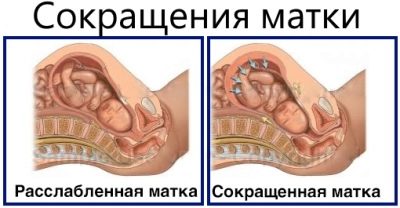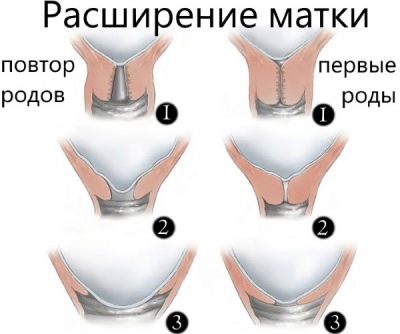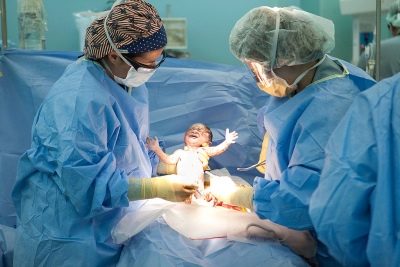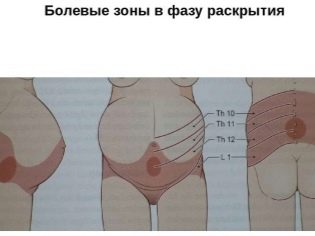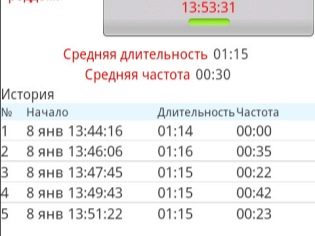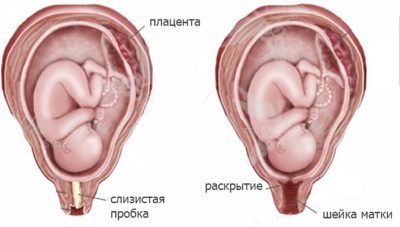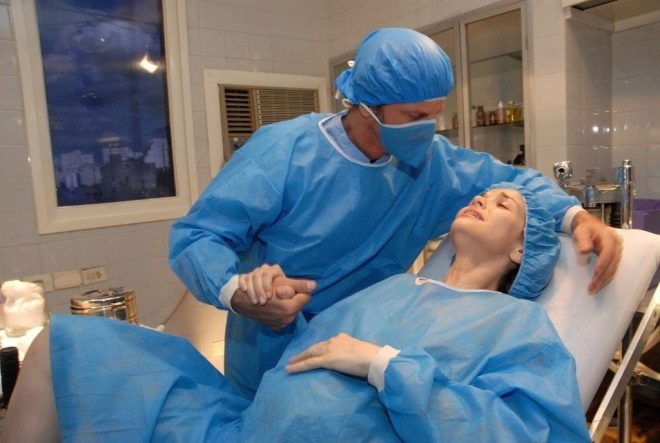How to understand that the fight began?
The question of how to understand when the contractions will begin is relevant mainly for primipara women who have no idea how this period of childbirth proceeds. Convulsions are awaited with trepidation and anxiety, with fears, and therefore pregnant women with special attention “listen” to their bodies in the last trimester of pregnancy. In this article, we will talk about how battles start and whether they can be confused with anything else.
What it is?
In the title lies the physiological essence of what is happening. The contraction is the moment when the muscles of the uterus contract. They used to say "grabs", "grabs". This popular definition migrated to medical textbooks, and the word became the official medical definition.
Before childbirth in the body of a pregnant begin large-scale changes. The uterine tissue cells — myocytes, do not themselves have a great capacity for contraction, contraction, or stretching. In order for contractions to begin, they must accumulate a sufficient amount of a special protein, α-thomyosin. It is he who is actively produced several days before delivery, more often 48 hours. Simultaneously with this process, the placenta and the pituitary gland begin to produce a special hormone - oxytocin, which causes the uterus muscles to become more alert and provokes contractions.
With the first labor pains, an important process of cervical dilatation begins. The contraction, appearing from one part of the uterus, extends to the entire genital organ. The round muscle, which is the neck, begins to unfold gradually. This is necessary so that the fetus, when the time comes, can leave the mother's womb. The head of the baby is larger than the cervix, and therefore the latter needs to open up to 10-12 centimeters for the entire period of contractions, then the baby will be able to leave the cozy space that has become too small for him.
Uterine contractions "squeeze" and the fetal bladder. Therefore, at a certain stage of labor, the amniotic membranes do not stand up, burst, amniotic fluid is ruptured. Natural labor is impossible without full fights.
If cervical dilatation does not occur, or it occurs very slowly, induce labor or perform a cesarean section.
False and True Differences
The purpose of true labor pains is clear and obvious. But with false bouts women often have reasonable questions. For physicians and scientists, the true purpose of false contractions (Braxton Hicks contractions) is not clear today. But it is absolutely certain that short-term tension of the uterus in pregnant women at any time from week 20 in no way can affect the date of delivery.
They do not lead to the opening of the cervix, do not exert pressure on the fetal bladder. False contractions are not accompanied by the production of oxytocin and actomyosin protein. There is a version that with the help of short-term cuts, the uterus prepares for childbirth, as if “rehearsing”. Training fights are not observed in all women, they are practically painless and completely safe.
Such contractions are felt as irregular episodes of increased uterine tone.
Unpleasant sensations are quite possible, but they will not be painful.Rather, they can be described as sinking or aching in the very lower abdomen to the left and to the right. The sensation arises from the tension and tension of the ligaments that hold the uterus. Stomach kameneet and after a few seconds, minutes, "lets go." The next fight may be repeated in five minutes, and in five hours, and in a few days. No regularities, cycles, orderliness training fights do not have.
This is the main feature that will allow to recognize the false contractions from the true ones, which always have a certain frequency, duration and sequence. In other words, contractions with the onset of labor activity will be repeated at regular intervals, last for a certain number of seconds, and grow as they develop.
Painful sensations in a real contraction are localized in the back, lower back, over the entire area of the abdomen. The pain starts from the back and lower back and gradually “surrounds” the abdomen below and above. When changing the position of the body, taking the pill "No-Shpy" or papaverine, when taking a shower, false contractions usually recede. Real slow down, delay or stop fail.
To determine the difference will be easy, say obstetricians. Real labor pains are felt completely differently. The nature of sensations, the place of pain, cyclicality and regularity - these are the main signs that will help a woman to sort out what is happening in time.
Today, women have access to special applications for smartphones, the so-called counter programs, which will notify their owner that she has real contractions, and they will indicate when it is time to go to the maternity hospital.
Forerunners
Almost always, labor pains are preceded by so-called symptoms - precursors. They can appear during pregnancy as a few days before the birth of the baby, and just a few hours before birth. As already mentioned, before childbirth, serious hormonal, biochemical and physiological changes occur in the woman’s body. And these changes may be manifested by the following signs.
- Omission of the abdomen. A precursor is considered only conditionally, since in some the stomach drops long before the birth.
- Weight loss. A week before giving birth, on average, a woman can lose 1-3 kilograms due to a decrease in the amount of water, due to hormonal adjustment and a decrease in the level of progesterone.
- Diarrhea. Loose stools are found in every second pregnant woman. It is believed that in this way the woman’s body is “cleansed” before giving birth.
- Mood swings, depression, anxiety, insomnia - usually amplified 3-4 days before delivery.
- Discharge of mucus plug. It is a lump of yellowish mucus, clear, pinkish, with or without blood veins. After the cork comes out, the labor can begin after a few hours, and after a few days.
- Strengthening the frequency of training contractions.
- Increased vaginal discharge.
It is not necessary that all these "forerunners" are felt in the complex. But even 1-2 signs from the list may well serve as a signal for readiness. When precursors appear, you should not immediately grab a bag with things and documents and run to the maternity hospital. Before birth can still be quite long. It all depends on how a particular female body will perceive hormonal changes, the speed with which the preparation of the uterus proceeds, and the ripening of the cervix. It should soften, and it is this process in the stage of precursors that can lead to the passage of mucus plug from the cervical canal.
Cork may not come out, no need to be scared. More precisely, it will come out necessarily, but a woman may not notice this, because it can happen during urination. Often, cork leaves its place in the cervical canal with water or in the first stage of labor contractions.
Start
Pregnant women are very suspicious, and therefore any changes in their state of health before childbirth can be perceived as a sign that the contractions begin. On this subject, experienced obstetricians like to say that you can not miss the fight, and if in doubt, it means that the birth has not yet begun.
Understand that they began, you can by the regularity of bouts. Already from the very first there will be a noticeable definite pattern. The first always starts the latent period, the longest. In primiparous women it can last up to 10-12 hours, in women who have given birth earlier, up to 8 hours. During this period, the uterus should open up to 3 centimeters. Disclosure is slow, the uterus contracts and relaxes. The fight begins involuntarily, without the participation of the will of the woman, and ends after a certain period of time with relaxation.
In the latent stage of the fight will increase gradually. At first they can occur every 30-40 minutes. The duration of the reduction itself is small - no more than 20 seconds. Feelings at the real fights leave no doubt about what is happening - The woman feels the painful squeezing of the uterus in the back, in the lower back, and throughout the abdominal wall. This means that the very first contractions will occur relatively rarely. Between them, the woman will have about half an hour to rest.
Since the stage is long, there is still time to check all the things that were collected in the hospital, the presence of all the necessary documents, you can not rush to go to the medical facility. You can walk, take a shower, change clothes, some even sing to distract. We must try to relax and tune in to positive and easy childbirth. With all this, a woman should monitor the frequency of contractions and the duration of breaks between them either using a stopwatch or a watch with a second hand, or using a special program on a smartphone.
In the hospital you need to go when the contractions are repeated every 10-15 minutes.
At the end of the latent period begins the period of active contractions. It lasts about 4-5 hours, during which time the cervix will open a little more and the disclosure will be up to 7 centimeters. The contractions intensify, repeat every 3-4 minutes on average and last up to 60 seconds. This period will require a woman to focus, attention and certain knowledge of the rules of labor in childbirth - breathing, postures that facilitate the power of labor.
The active period ends with a slowdown period. The strongest fights for all kinds of labor - transient ones appear. They lead to the full disclosure of the cervix to 10-12 centimeters. This period lasts from half an hour to an hour and a half. Primiparous - longer than multiparous. After that, there is a feeling of pressure down, as if the woman sharply wanted to empty her intestines. This is the beginning of the attempts and the end of the first stage of labor.
Preterm birth is often accompanied by early or prenatal discharge of water. If the waters have withdrawn, but the contractions have not come, the woman does not need to wait for them to appear. You should immediately go to the maternity hospital, because a long anhydrous period is extremely dangerous both for the child and for his mother. And after the spontaneous rupture of the fetal bladder and after its opening (amniotomy), the woman should be under the supervision of doctors.
Fight can begin at any time - day, night, morning or evening. But in most cases, women say that they felt the first bouts in the afternoon. They are more strongly felt in the prone position.
In 10% of cases, childbirth begins with the discharge of amniotic fluid. Only in 5% of cases, deliveries begin on the day indicated as the estimated day of delivery (DA). In the rest, the appearance of contractions can be expected from 37-38 weeks of pregnancy and later. Births up to 37 weeks are considered premature.
How to act?
If a woman feels that there has been a contraction, and determines that they are real, true, there is no need to panic.There is plenty of time to quietly drink tea, take a shower, and with things without haste to come to the hospital. You need to properly tune in, remember everything that was taught in the courses of future mothers.
From the first latent stage of labor, a woman can take control of her condition in her own hands. She will be helped by proper breathing. It is necessary to inhale deeply and slowly and exhale slowly. As the pains intensify, the contraction can be “breathed” by applying shallow short breathing based on a deep breath and private exhalations, as well as dog-like breathing.
It is important to breathe that way and not shout, because as the blood becomes saturated with oxygen, the woman's body begins to produce endorphins, which are not only “hormones of happiness” and improve mood, but also have a pronounced analgesic effect. There are even whole methods of labor pain relief only on the basis of breathing, aromatherapy, warm and cold compresses, massage (Lamaz method).
The description of different methods women receive in the classroom in the women's consultation, in the same place they are taught breathing, correct postures, in which it will be more comfortable to survive the active phase of the bouts.
Try not to eat or drink plenty of fluids at the very beginning of contractions. Do not take any medication. Move to accelerate cervical dilatation, do not lie or sit in one place.
So, with proper breathing and Spartan calm (for panicked women, those who are very afraid, fights are usually always longer and painful), you need to check the documents and call an Ambulance or ask relatives to take you to the maternity hospital. The option with "ambulance" is preferable. If something goes wrong, then in the ambulance a woman can always get timely help.
Do not wait for a certain frequency of contractions, but immediately go to the maternity hospital if you have spotting from the genitals, water is gone.
Especially you need to hurry if the water that has quit is green or any other dark color. This is always a sign of a child’s distress, hypoxia, so you need to get to the doctors as soon as possible, who will decide how to help the baby.
Anesthesia
To relieve pain in the active and transitional stages of labor in modern maternity hospitals, the method of epidural anesthesia is often used, in which the anesthetic is injected directly into the cerebral spinal canal. To agree to such anesthesia or not, every woman is free to decide independently. According to reviews of women who have gone through childbirth with anesthesia, the effect is not always the same as expected. Just from the pain does not relieve the injection.
Much more positive feedback on natural anesthesia for contractions using the Lamaze method and “Cobas breathing”. Women who tried to approach each stage of labor from the first fight to the last attempt from the standpoint of natural behavior, correct breathing, obedience during childbirth, argue that the birth was easy enough, quickly, and the sensations were quite tolerant.
How to understand that childbirth began and define contractions, see the next video.


